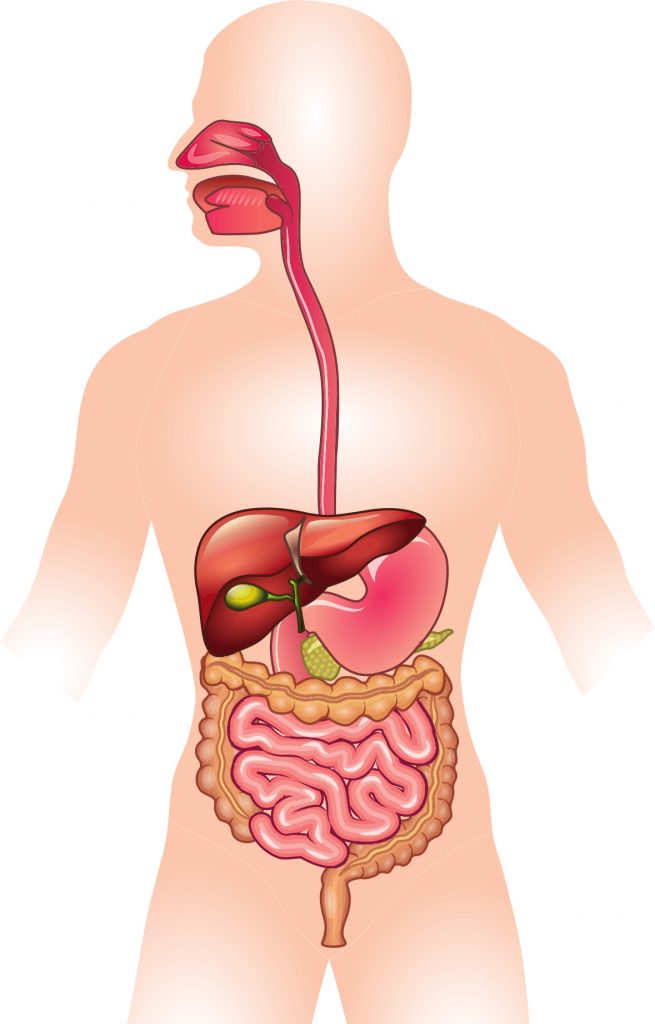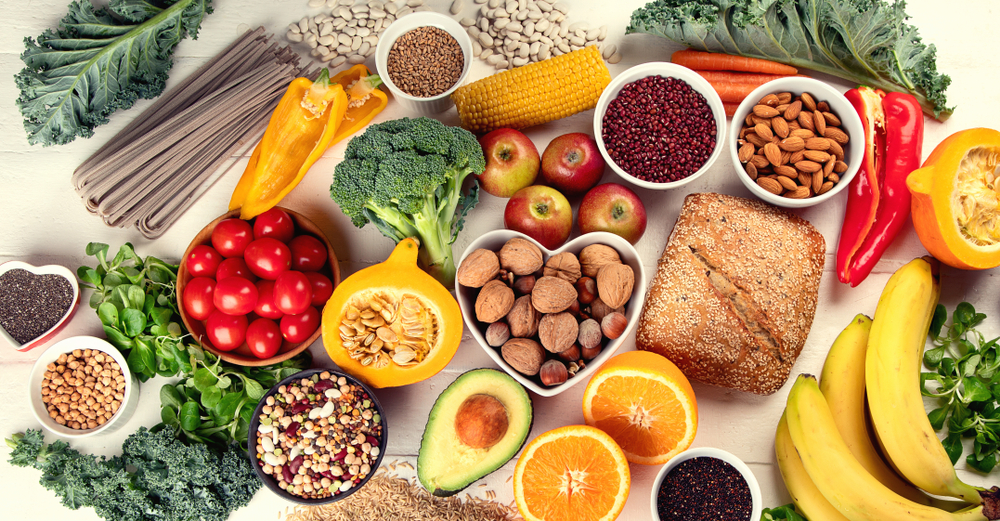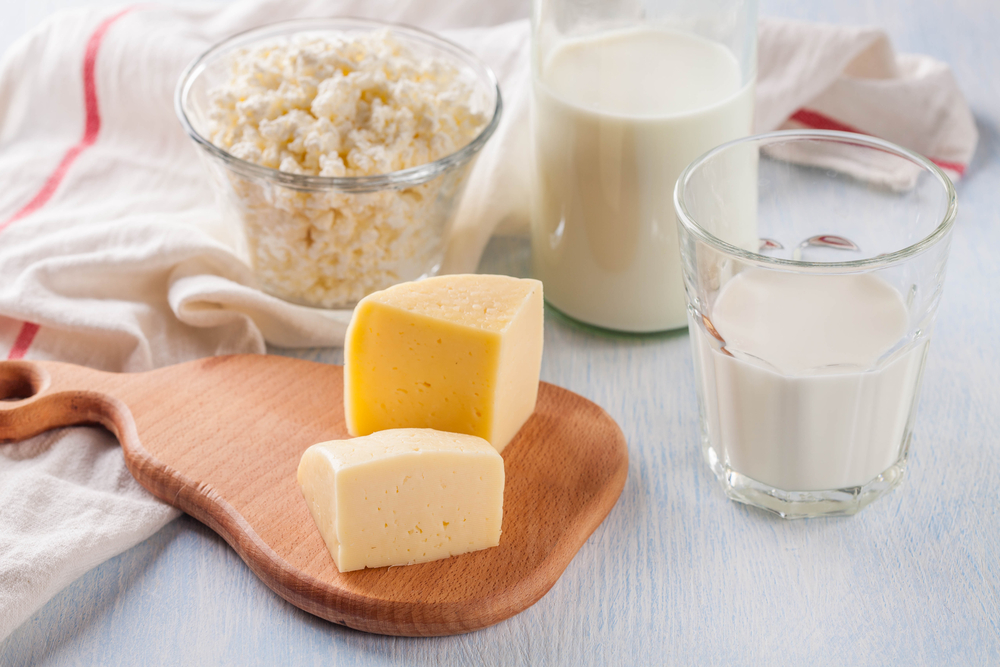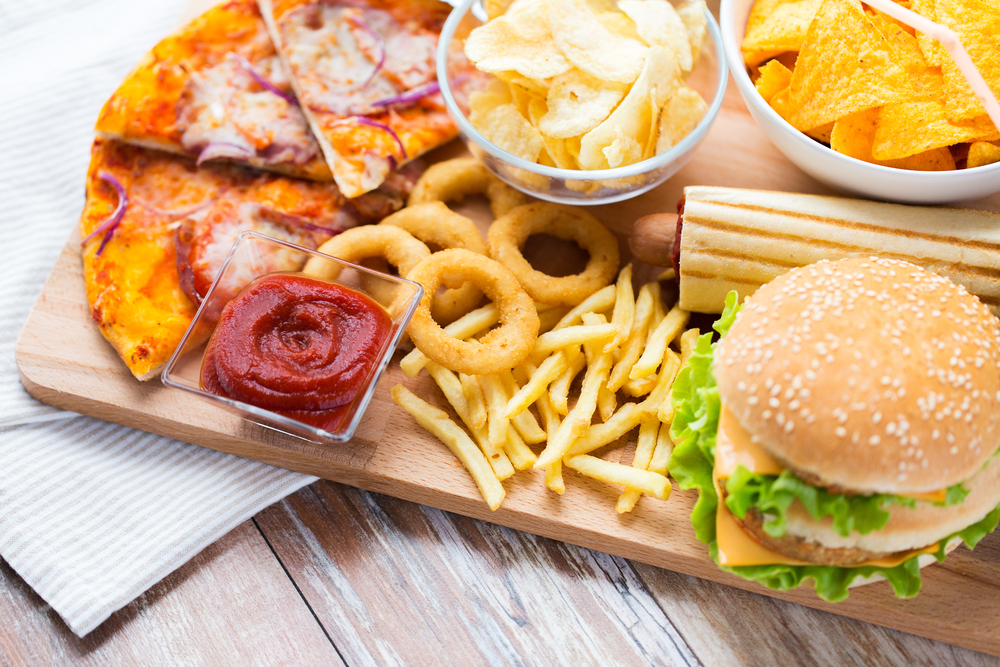How does the digestive system work? How fast should digestion work to keep us healthy and feeling well? Which foods are digested faster and which slower? And last but not least: why is it so important to keep your digestion in good order? If any of these questions interest you, then you’re in luck, as all the answers are here.
Why healthy digestion is the key to good health
Good digestion is extremely important for overall health and well-being. The digestive process allows the body to obtain energy and nutrients from food, which is necessary for the normal functioning of the body, and vital processes such as cell growth and repair. These nutrients include carbohydrates, proteins, vitamins, fats, minerals, and water.
Furthermore, 80% of the cells of the immune system, which is responsible for our body’s defence, are contained in the digestive system. Therefore, in order to protect ourselves from cold viruses and other, more serious problems, our digestive system needs to function well.
Why is a healthy digestive system important?
The digestive process is handled by the digestive tract, which runs from the mouth to the anus, as well as the liver as the body’s chemical factory, the pancreas, and the gallbladder. Since the digestive tract is our body’s biggest point of contact with the outside world, it’s essential to keep it in good shape. What does the digestive tract do?
- The digestive tract is built to prevent harmful substances from entering the body, while allowing important nutrients to pass through.
- The lining of the digestive tract has sufficient blood circulation to ensure that both the absorption of nutrients and the body’s own defences function smoothly.
How to maintain digestive health
In addition to a healthy diet, it’s important to:
- maintain physical fitness and a healthy weight;
- wash your hands regularly, especially before eating;
- ensure the hygiene of the food you consume;
- not burden the digestive tract with huge meals;
- control the intake of substances that can irritate the digestive tract (coffee, alcohol, stimulants, etc.);
- eat your last meal of the day at least three hours before sleeping;
- reduce stress levels; and
- avoid unhealthy diets that have no medical basis.
How long is the usual food digestion time?
Do you ever wonder if the time it takes your body to digest food is normal? Fortunately, there are general guidelines that make it easy to check. The digestive process usually takes between 24 and 72 hours, but the actual time depends on a variety of factors. Every person is different – for example, some people have bowel movements three times a day, others once every three days, and there’s not necessarily anything wrong with them.
But before we go into the details, it’s essential to understand how digestion actually works. Let’s take a look at its different stages and what happens to food on its way from the mouth to the small and large intestines.
How food travels through the digestive system
The digestive tract is made up of:
- the mouth,
- oesophagus,
- stomach,
- small intestine,
- large intestine,
- rectum, and
- anus.
Let’s take a look at what happens at each of these stations.

The mouth: the entry point of the digestive tract
Digestion starts in the mouth or, according to some definitions, even before that. Indeed, the salivary glands are activated as soon as we see or smell food. Once food enters the mouth, we chew it down into more easily digestible pieces. With each bite, enzymes in the saliva break down the starch to make it easier to swallow, and then the tongue moves the food towards the oesophagus.
The oesophagus: the link between the mouth and the stomach
When food is eaten, chewed and swallowed, it passes down the oesophagus, which lies in the throat, next to the windpipe. The windpipe is protected by a small elastic flap called the epiglottis, which folds over it to prevent food particles from entering and causing choking.
Food then travels down the oesophagus through a process of muscle contraction and stretching, known as peristalsis. But before it can enter the stomach, a muscle called the lower oesophageal sphincter must relax. Once this happens, food can enter the stomach, and the sphincter then closes off immediately so that it doesn’t return to the oesophagus or the mouth.
When this muscle relaxes too much, the stomach contents can flow back into the oesophagus or mouth, which we call acid reflux or heartburn. Read the article on heartburn to learn how to overcome this problem before it leads to more serious complications.
Stomach: breaking down food
The stomach is a hollow organ that functions as a kind of container for food. This food is mixed with stomach enzymes and acid, which break it down. Once the food is sufficiently digested, it can continue its journey to the small intestine.
Small intestine: absorption of nutrients
The small intestine is a long muscular tube divided into three segments:
- The duodenum is the first section of the small intestine, responsible for continuing digestion.
- The jejunum and ileum are in charge of the absorption of nutrients into the bloodstream.
As food is transported through the small intestine by the action of peristalsis, it mixes with the digestive juices of the pancreas and liver, which speed up the process of food breakdown. The cells of the small intestine use their cilia to absorb the key nutrients and water that are essential for our bodies.
Food enters the small intestine in semi-solid form and leaves it as a liquid. Once the nutrients are absorbed, the remaining, undigested food continues its journey into the large intestine.
Let’s also have a quick look at the roles of the pancreas, liver, and gallbladder:
- The pancreas supplies the duodenum with digestive enzymes, which are needed to break down proteins, carbohydrates, and fats. It also produces insulin, the main hormone for metabolising sugar.
- The liver also handles the nutrients absorbed by the small intestine. It helps digest vitamins and some fats by secreting bile. The liver is often described as the body’s chemical factory. It converts the substances absorbed by the intestines into a variety of biological compounds needed by the body. It also acts as a filter, breaking down and eliminating harmful substances.
- The gallbladder stores bile from the liver and passes it to the duodenum, where it helps in the digestion of fats.
Large intestine
The large intestine is the muscular tube that connects the small intestine to the rectum. Its role is to process waste materials and prepare them for removal from the body.
It usually takes 6 to 8 hours for food to pass through the stomach to the small intestine, and from there to the large intestine. Once partially digested food has made its way to the large intestine, it can stay there for more than a day, breaking down even further. The remaining water and nutrients that might be of use to the body are absorbed, while the rest is converted into stool. The latter is made up of food residues and bacteria.
Stool passes through the large intestine by means of peristalsis. Initially it flows in liquid form, but becomes solid when the water is removed. Roughly twice a day, it is passed to the next stop: the rectum.
The rectum and anus: where digestion ends
In about 2 to 3 days, the food you have eaten should have moved through your digestive tract to its last stop.
The rectum receives the stool from the large intestine and sends signals to the brain that it needs to be emptied. If the brain gives permission, the sphincter relaxes, while the rectum contracts and pushes the stool out through the anus. The latter is flanked by the pelvic floor muscles and two sphincter muscles, which prevent any accidental release of stool.

How long does it take to digest food?
In theory, healthy digestion takes between 1 and 3 days, but this is only an estimate. The time it takes for food to go from the mouth to the toilet bowl also depends on age, gender, functioning of the metabolism and, of course, the type and amount of food a person eats.
Let’s take a look at the most common estimates of digestion time depending on the food or drink consumed.
How long does it take to digest water?
If you drink water on an empty stomach, it travels immediately to the intestine. This is why it’s a good idea to drink some water first thing in the morning, as this allows your body to hydrate quickly.
How long does it take to digest other liquids and drinks?
If you drink juice more often than water, it’ll be digested in about 20 minutes. Some freshly squeezed juice can thus provide a quick boost to your health through the rapid absorption of vitamins and minerals from fruit and vegetables.
Unlike juices, smoothies retain the fibre from the fruit and vegetables blended together. This is why they are more filling and the digestive process takes longer, at about 30 minutes. Foods rich in fibre are great for the digestive tract, as they help it to work more efficiently.
EXPERT TIP: To help your body digest other foods faster, drink some mineral water. Its mineral content will provide your body with essential nutrients such as calcium or magnesium, while at the same time speeding up your bowel movements.
Donat: helping to speed up digestion
Donat natural mineral water is an excellent choice for healthy digestion. Because of its above-average mineral content, it’s been used for centuries to help regulate digestion. Its effectiveness in speeding up digestion has also been clinically proven by a German study.
How does Donat speed up digestion?
The action of Donat natural mineral water is based on osmosis. Sulphate ions draw water from the cells of the intestinal wall and soften the stool, while magnesium relaxes the muscles and aids peristalsis – the process of pushing stool out of the body. The effects of Donat are thus mechanical rather than chemical, which means that it does not cause dependence or have any negative effects. Read more about how Donat works.
First of all, you need to consume Donat in the right way to achieve the desired effect. Our Donat Moments app for iOS and Android can help you with this by regularly reminding you to drink the recommended amounts, thus ensuring the correct dosage. As Donat also relieves several other health problems, such as heartburn or headaches, the app can help you keep up the right drinking regime to tackle these problems more effectively.
How long does it take to digest fruit
Fruits with a higher water content and less fibre, such as melons, are usually digested quicker than those with more fibre, such as apples or pears. However, the exact times required for digestion are not set in stone, as the digestion of fruit depends on its fibre content, sugars, acids, and combination with other foods. How fruit is prepared also plays a role in how fast it’s digested (raw, cooked, blended).
If we eat only fruit, it usually leaves the stomach within 20 to 40 minutes. But if it’s mixed with other foods – for example, yoghurt – or eaten after lunch, it takes longer to digest.
In any case, a healthy digestive system can digest different types of food at the same time, so mixing various fruits is usually not a problem, except for people with very sensitive digestion.

How long does it take to digest vegetables?
Compared to fruit, vegetables take slightly longer to digest, mainly due to their fibre content. Vegetables high in water are the quickest to digest. Cucumbers, peppers, and tomatoes, for example, will only take about 30 minutes to leave the stomach and continue through the digestive tract.
Vegetables from the brassica family, such as kale, cauliflower, broccoli and others, typically take around 40 minutes to pass through the stomach.
On the other hand, there are vegetables that are digested more slowly: carrots, beetroot, and other root vegetables usually take about 50 minutes to digest. Potatoes, butternut squash, artichokes, sweet potatoes, corn, and so on are digested in about 1 hour. However, it’s important to note that the time varies from person to person and depends on the combination of other foods.
Digestion of cereals
Cereals and carbohydrates take longer to digest than fruit and vegetables.
Cereals such as brown rice, buckwheat, and oats take about an hour and a half to exit the stomach, while legumes such as chickpeas, lentils, and beans take even longer – about two hours.
Digestion of meat
Meat products that are the fastest to digest include lean fish (cod, catfish, sole, seafood, etc.), which will leave the stomach in about 30 minutes. On the other hand, fattier fish (salmon, sardines, trout, etc.) take about 50 minutes to digest.
Other types of meat take longer to digest. Chicken and turkey are the fastest. Beef, lamb, and especially pork take much longer to digest completely.
Digestion of dairy products
On average, skimmed milk and low-fat cheese (such as low-fat cottage cheese or ricotta) are digested in 1.5 hours, while full-fat cottage cheese and soft cheeses leave the stomach in 2 hours. Full-fat hard cheeses take up to 5 hours to digest fully.

Digestion of eggs
An egg yolk leaves the stomach within 30 minutes, while an entire egg takes 15 minutes longer.
Digestion of seeds and nuts
Seeds rich in fat (such as sesame and sunflower seeds, as well as pumpkin seeds) take about 2 hours to digest.
Nuts (raw peanuts, almonds, cashew nuts, walnuts, etc.) take between 2.5 and 3 hours to digest.
TIP: There’s no need to start a stopwatch
Before you start timing how long it takes from when you eat to going to the toilet, remember that the food digestion times given above are only approximate. They were presented just to give an idea of how long it takes, on average, for a certain type of food to leave the stomach. But if this isn’t your experience then there’s no immediate cause for alarm, as digestion can vary slightly from person to person.
The exact length of time also depends on the foods that are combined in the meal, as well as how you eat – how well you chew each mouthful, for example.
However, if you feel you’re suffering from slow digestion then be sure to have a look at our tips for constipation.
If you’ve already dealt with your constipation, you need to ensure that speedy digestion becomes part of your daily routine. Read how to maintain a healthy digestion for a healthy life.
Hard-to-digest foods
Let’s take a look at which foods are difficult to digest and best avoided if faster digestion is your goal.
Fried and fatty foods
These foods are very high in fat and low in fibre, so they’re never a good choice for digestion, or health in general. When we eat fried food, two things can happen: it may move through the body quickly and cause diarrhoea, or it may remain in the digestive tract for a longer period of time, resulting in bloating and a feeling of satiety, or fullness.

Citrus fruits
In principle, citrus fruits are good for speeding up digestion as they’re high in fibre, but for some people they cause digestive problems. If you notice that oranges or other citrus fruits have a bad effect on you, then make sure you don’t eat too many at once.
Refined sugars, artificial sweeteners, and fructose
Artificial sweeteners are difficult to digest and tend to travel through the system undigested, providing few nutrients to the body. They also negatively affect the microbes in your gut, which can lead to a number of health problems. If you eat a diet with too much sugar, cramps and diarrhoea can occur. Of course, an energy surplus also leads to weight gain, and excess kilograms are stress for the whole body, including the digestive system.
Legumes
Legumes, like beans, peas, lentils and chickpeas, are an excellent source of nutrients, as they have the most protein, as well as fibre, of all plant foods, but they can be a little more difficult to digest. They often cause gas and cramps, as the body lacks the enzymes needed to break down the sugars they contain. As a result, they reach the large intestine undigested, where they are fermented by the gut microbiota, which produces gases that cause bloating.
Brassicas
Vegetables from the brassica family, such as broccoli and cabbage, contain the same sugars as legumes and are therefore difficult to digest. If you have digestive problems, try eating cooked brassicas, as cooking makes them easier to digest.
Spicy foods
Some people experience slow digestion and heartburn after eating spicy foods, caused by the capsaicin in chilli peppers.
Dairy products
Dairy products can be difficult to digest for people with lactose intolerance. If you can’t eliminate such foods from your diet, non-prescription tablets can at least partially replace the missing enzyme that’s needed for trouble-free digestion of dairy products.
Coffee
Coffee is another common cause of stomach irritation, as it stimulates the production of gastric acid. This can cause inflammation and heartburn. Furthermore, caffeine, present in coffee and other caffeinated drinks, acts as a diuretic – i.e. it stimulates urination – which can sometimes result in dehydration and/or constipation, especially if you’re not consuming enough fluids to begin with.
So if you suffer from digestive problems, try to limit the amount of coffee you drink, and don’t have it on an empty stomach.

Keep a food diary
If your digestion is not performing as it should, it’s important to identify the culprit as soon as possible. Fortunately, there’s a quick and simple way to find out if the problem comes from your diet: start a food diary.
Keep a daily record of the foods you eat. If the list includes any of the hard-to-digest foods mentioned above, take note of any effects and try to cut down on them. Monitor how your body reacts and adjust your diet accordingly. Either limit consumption of problematic foods or find alternatives that don’t cause you problems.
Which foods are digested quickly?
Foods with a shorter digestion time include:
- toast: some of the carbohydrates in bread break down during the process of toasting;
- bananas: an excellent source of carbohydrates, fibre, potassium and many vitamins and minerals, and most people don’t have any problems digesting them (although people suffering from IBS should watch out for ripe bananas);
- eggs: not only easy to prepare, but also easy to digest;
- sweet potatoes: a source of soluble fibre, which is easier to digest than insoluble fibre (although that has many benefits, too!), and which also increases the amount of beneficial gut bacteria;
- chicken: a source of lean protein that takes less time to digest than other meats.
Common digestive problems and conditions
If your diet already includes foods that promote fast digestion, but you’re not seeing any progress, you may be having trouble digesting certain foods, or even suffer from a gastrointestinal condition. If you’re experiencing problems such as acid reflux, bloating, abdominal pain, cramps, constipation, gas or diarrhoea only occasionally, there’s usually nothing to worry about. However, if you’re experiencing these problems on a regular basis or they become chronic, you should talk to your doctor as soon as possible.

Below are some medical conditions that may be the cause of your problems:
Lactose intolerance
Dairy products can be difficult to digest for people who lack the lactase enzyme, which is necessary for the digestion of the lactose sugar in milk and dairy products. As a result, they cause diarrhoea, stomach cramps, gas and bloating. But these symptoms are not a cause for any great concern, as they can be resolved by switching to lactose-free dairy products or using over-the-counter supplements which help the body to replace the missing enzyme.
Coeliac disease
The presence of gluten in foods containing wheat, rye, and barley causes problems for people with coeliac disease. Their bodies identify gluten as harmful and react by attacking this protein when it reaches the small intestine, thus damaging the gut.
If you notice symptoms such as fatigue, bloating and abdominal pain, diarrhoea (especially if your stools have a particularly bad smell or look greasy) and unexplained weight loss, you may have coeliac disease. See a doctor immediately to avoid complications. Although there is currently no cure for coeliac disease, patients can enjoy a perfectly healthy life on a gluten-free diet.
Heartburn, acid reflux and GERD
These three terms are often used interchangeably, although they actually describe different, but still related conditions and symptoms.
Acid reflux (gastroesophageal reflux) is a fairly common problem caused by stomach acid returning to the oesophagus. Acid reflux that’s chronic and more severe is classified as GERD (gastroesophageal reflux disease). Heartburn is a symptom of both acid reflux and GERD.
When stomach acid flows back into the oesophagus, it causes heartburn, a burning sensation that’s not only unpleasant but also problematic, particularly if it recurs several times a week. If this happens, consult your doctor, as more frequent heartburn can develop into gastroesophageal reflux disease (GERD).
Irritable bowel syndrome (IBS)
As the name suggests, this disease irritates the bowel and is characterised by symptoms including cramps, abdominal pain, constipation, diarrhoea, bloating, and gas. As with coeliac disease, there’s currently no cure or treatment for IBS, but changes to your diet can help you maintain balance and avoid feeling unwell.
Frequently Asked Questions
1. How long on average does it take to digest food?
On average, it takes from one to three days to digest food.
2. What does the speed of digestion depend on?
How fast the food travels through our intestines and how it is excreted depends on many factors, especially on age, the level of physical activity and stress, gender, metabolic function, dietary habits (how and how much we eat…)…
3. Which foodstuffs are more difficult to digest?
Digestion can be slowed down by fatty and fried food, dairy products, legumes, cabbage, and products containing refined sugar.
4. What causes indigestion?
Digestion is slowed down by an unhealthy lifestyle together with fatty, spicy food, lack of physical activity and stress. Digestion is also slowed down if we do not drink enough fluids.
5. Does physical activity affect the speed of digestion?
Regular exercise accelerates the peristaltic, i.e. contractions and stretching of intestinal muscles that push the food through the intestines. However, it is not just about exercising. Getting proper rest is equally important.
Sources:
- Sensoy, Ilkay. “A review on the food digestion in the digestive tract and the used in vitro models.” Current research in food science vol. 4 308-319.
- Asnicar, Francesco et al. “Blue poo: impact of gut transit time on the gut microbiome using a novel marker.” Gut vol. 70,9 (2021): 1665-1674.
- Lee, Yeong Yeh et al. “How to assess regional and whole gut transit time with wireless motility capsule.” Journal of neurogastroenterology and motility vol. 20,2 (2014): 265-70.
- Procházková, Nicola, et al. “Advancing Human Gut Microbiota Research by Considering Gut Transit Time.” Gut, vol. 72, 1 (2023): 180-191.
- “How Long Does It Take to Digest Food?” Medical News Today, 2024, https://www.medicalnewstoday.com/articles/319583. Accessed 20 Nov. 2024.
- Patricia, J. J., and A. S. Dhamoon. “Physiology, Digestion.” StatPearls, StatPearls Publishing, 12 Sept. 2022, https://www.ncbi.nlm.nih.gov/books/NBK544242/. Accessed 20 Nov. 2024.
- “How Long Does It Take to Digest Food?” Healthline, Healthline Media, 2024, https://www.healthline.com/health/how-long-does-it-take-to-digest-food. Accessed 20 Nov. 2024.
- “How Long Does It Take for Food to Digest?” Mayo Clinic, 2024, https://www.mayoclinic.org/digestive-system/expert-answers/faq-20058340#:~:text=After%20you%20eat%2C%20it%20takes,move%20through%20the%20entire%20colon. Accessed 20 Nov. 2024.
- “How Long Does It Take to Digest Food?” Healthline, Healthline Media, 2024, https://www.healthline.com/health/how-long-does-it-take-to-digest-food#digestive-problems. Accessed 20 Nov. 2024.
- “How Long Does It Take to Digest Food?” Cleveland Clinic Health Essentials, 2024, https://health.clevelandclinic.org/how-long-does-it-take-to-digest-food. Accessed 20 Nov. 2024.
Choose chapter:






